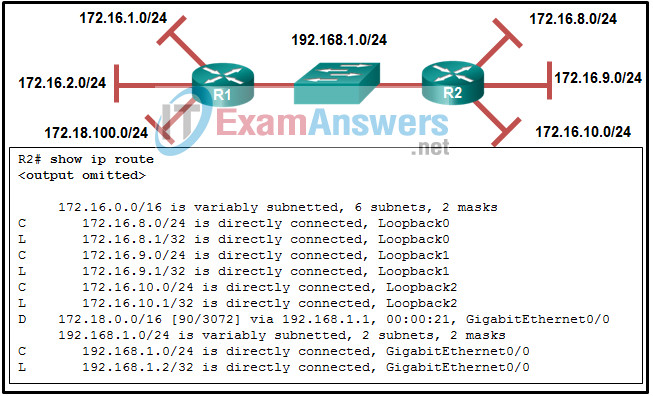Refer to the exhibit. The routing table on R2 does not include all networks that are attached to R1. The network administrator verifies that the network statement is configured to include these two networks. What is a possible cause of the issue?

- The AS number does not match between R1 and R2.
- The network statements should include the wild card mask.
- The interfaces that are connected to these two networks are configured as passive interfaces.
- The no auto-summary command is missing in the R1 configuration.
Explanation: The fact that R2 has a route to 172.18.100.0 from R1 indicates that EIGRP is functioning, which excludes the issue of an AS number not matching. The issue is that both sides have a network within the Class B 172.16.0.0/16 network. Therefore, automatic network summarization must be disabled by the no auto-summary command. If this command is not used, the network statement with a wild card mask will not have effect. The passive interface, if configured, will prevent EIGRP updates from entering the two networks, but not prevent R1 from advertising them to R2.
Exam with this question: CCNA 3 Practice Final Exam Answers
Exam with this question: CCNP Enterprise: Advanced Routing (Version 8.0) – Routing Concepts and EIGRP Exam
Exam with this question: Quiz – Troubleshooting EIGRP for IPv4 CCNPv8 ENARSI
Please login or Register to submit your answer
